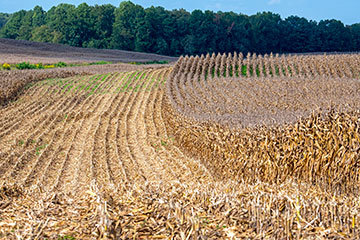Harvest Forecast 2023
Oct 04, 2023

According to a Sept. 12 report by the U.S. Department of Agriculture’s National Agricultural Statistics Service (NASS), corn harvest has ramped up and fall hay cutting and baling has continued steadily. Soybeans are filling pods and dropping leaves, quickly approaching harvest time. Cotton crops are inching towards opening bolls with conditions looking good across the board. Overall, dry weather is allowing for ample field work, and crop conditions remain strong as harvest season kicks into full gear. See the below harvest insights and predictions from the NASS report at press time of Sept. 12, 2023.
CORN
Based on conditions as of September 1, yields are expected to average 173.8 bushels per harvested acre, down 1.3 bushels from the previous forecast but up 0.5 bushels from last year.
SOYBEANS
Area harvested for beans in the United States is forecast at 82.8 million acres, up less than 1 percent from the previous forecast but down 4 percent from 2022.
COTTON
Based on conditions as of September 1, yields are expected to average 786 pounds per harvested acre, up 7 pounds from the previous forecast but down 164 pounds from 2022.
TOBACCO
Based on conditions as of Sept. 1, tobacco yield for the 2023 crop year is forecast at 2,153 pounds per acre, down 64 pounds from last year.
Visit Co-op for all your harvest essentials and expert know-how. Find the nearest store location here.
For more content like this, check out the latest issue of The Cooperator.
CORN
Based on conditions as of September 1, yields are expected to average 173.8 bushels per harvested acre, down 1.3 bushels from the previous forecast but up 0.5 bushels from last year.
SOYBEANS
Area harvested for beans in the United States is forecast at 82.8 million acres, up less than 1 percent from the previous forecast but down 4 percent from 2022.
COTTON
Based on conditions as of September 1, yields are expected to average 786 pounds per harvested acre, up 7 pounds from the previous forecast but down 164 pounds from 2022.
TOBACCO
Based on conditions as of Sept. 1, tobacco yield for the 2023 crop year is forecast at 2,153 pounds per acre, down 64 pounds from last year.
Visit Co-op for all your harvest essentials and expert know-how. Find the nearest store location here.
For more content like this, check out the latest issue of The Cooperator.